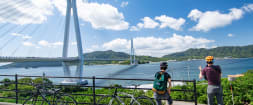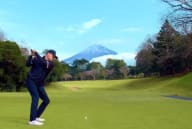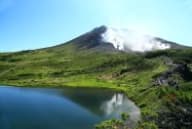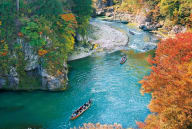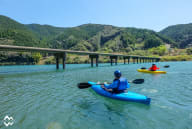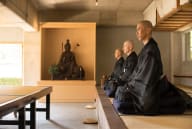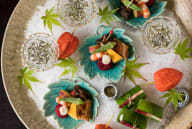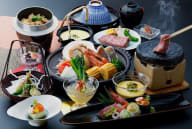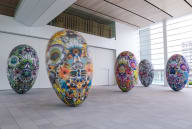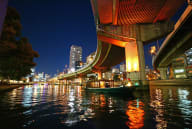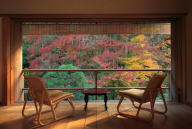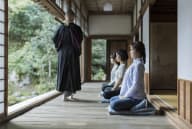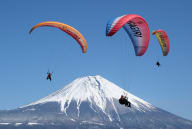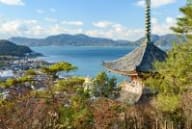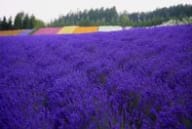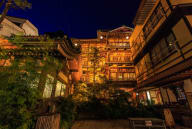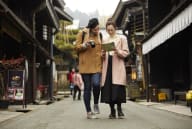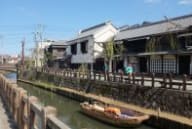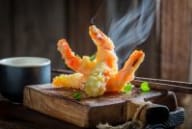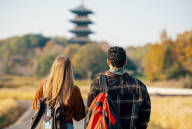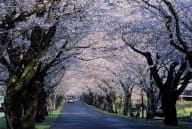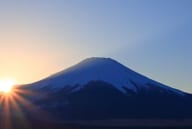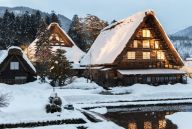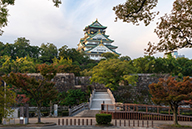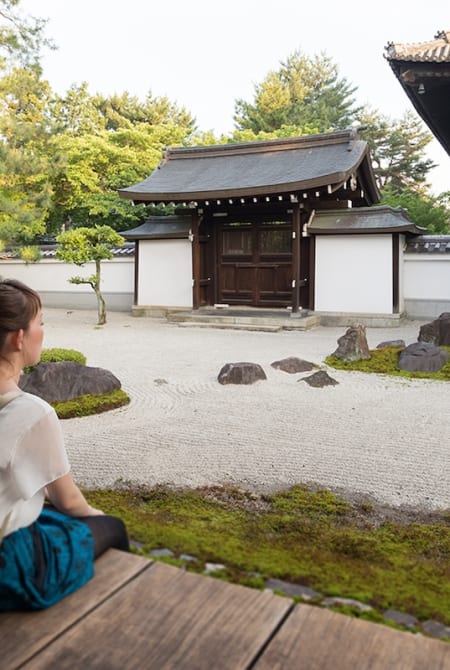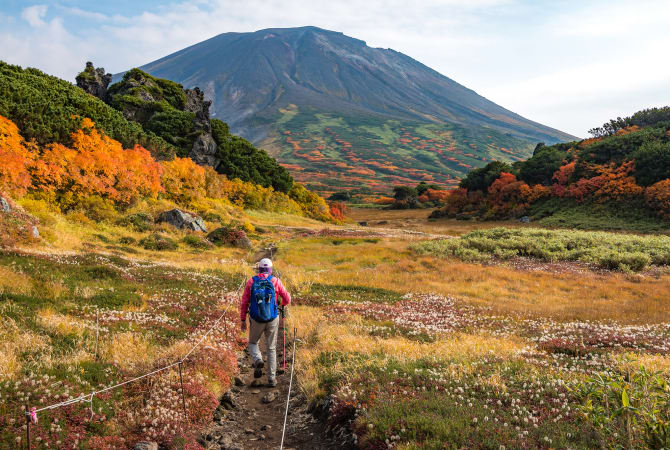Use the
Planning a Trip to Japan?
Share your travel photos with us by hashtagging your images with #visitjapanjp
Gain a deeper understanding of Japan’s rich history and traditions through its culture
There are many ways to experience Japanese culture, from tea ceremonies and tours of samurai battlefields to overnight stays in World Heritage temples. All offer the opportunity to learn something new about the country and its customs. Here are some ideas for connecting with Japanese culture.
Visiting Cultural Sites
Visiting Japan's cultural sites offers a captivating journey through history and tradition. Each location, from ancient shrines like Ehime’s Ishizuchi-jinja to the serene gardens of Kagawa’s Ritsurin Park, tells a unique story of Japan’s cultural heritage.
Dotted across the country are national treasures and important cultural properties, many of which date from before the Meiji period (1868–1912) when buildings were primarily made of wood. This makes the surviving structures incredibly rare and valuable. For help deciding where to visit, browse Japan Heritage designated destinations.
-
Shrines and temples
The shrines and temples across Japan provide insight into the country’s spiritual heritage. Shrines are part of Shinto, Japan’s indigenous faith, centered on showing respect for the myriad sacred deities known as kami that reside in the natural world. Temples are places of Buddhist worship, representing schools such as Nichiren, Shingon, Pure Land, and Zen Buddhism. Shinto and Buddhism have coexisted for centuries, historically, as a syncretic belief system. They were not formally separated until the Meiji period (1868–1912). As a result, it is common to find Shinto shrines and Buddhist temples on the same or neighboring grounds.
Learn more about visiting shrines and temples
-
Castles
Japanese castles are iconic symbols of the country’s samurai heritage and a testament to the power and artistry of feudal Japan. Many were built during the Sengoku or “Warring States” period (1467–1568), a time of intense civil wars. However, after Japan’s unification and the establishment of the Tokugawa Shogunate in 1603, many castles were demolished. Today, only 12 original castles remain, while others have been faithfully reconstructed, offering a glimpse of their former grandeur. Visit these historic fortresses around Japan and experience the legacy of samurai warfare.
Discover Japan’s original castles
-
Gardens
Japanese gardens are renowned for their beauty and intricate designs, and can be found at shrines, temples, castles, and on the former estates of daimyo lords. Each garden serves a distinct purpose and is meant to be appreciated in different ways. Some, like dry landscape gardens, are designed to be viewed from a single, seated position. They have carefully arranged stones, sand, gravel, and occasional plants, suggesting landscapes of mountains and water. Daimyo gardens are usually strolling gardens, inviting you to explore winding paths around a central feature—often a large pond—with arrangements of rocks, plants, and waterways to be admired from different angles.
Find Japanese gardens to visit
Discovering Ainu and Ryukyuan Cultures

Japan is a country of diverse islands, stretching from the northernmost island of Hokkaido to the southern archipelago of Okinawa. While Hokkaido was largely settled by mainland Japanese (Wajin) during the Meiji Period (1868–1912) and Okinawa came under mainland control in the seventeenth century, these islands are home to their own peoples and cultures.
In Hokkaido, Ainu have a deep spiritual connection to nature, reflected in their traditions of hunting, fishing, and crafts. You can learn about the life and culture of Ainu people at museums, such as the National Ainu Museum and Park, and through cultural activities, including guided walks.
In the south, the Ryukyu Kingdom, which encompassed the islands of Okinawa Prefecture, developed a vibrant culture shaped by trade with Japan, China, Korea, and Southeast Asia. Castle sites, royal palaces, and ancient worship sites preserve the heritage of the Ryukyu Kingdom. Some are designated world heritage sites and comprise the Gusuku Sites & Related Properties of the Kingdom of Ryukyu.
Enrich your visit by learning more about these cultures that thrived independently of, yet interacted with, mainland Japan.
Understanding Japanese History

Japan’s culture, traditions, customs, and even everyday etiquette are deeply rooted in its rich history. Understanding some key moments of this history can greatly enhance your visit, providing context for cultural sites and practices, and inspiring exploration of historically significant areas beyond the typical tourist spots.
Japanese history can be divided roughly into six periods as per this handy overview, ranging from prehistoric times when hunter-gatherers roamed the archipelago, to the modern developments of the twentieth century. Exploring these periods provides essential context for visiting Japan’s castles, temples, and shrines, which reflect the country’s fascinating past. For a deeper dive into Japan’s history, visit the country’s four national museums in Tokyo, Kyoto, Nara, and Kyushu.
A good starting point for understanding modern Japan is the Edo (1603–1867) and Meiji (1868–1912) periods. During the Edo period, urban culture flourished, solidifying many aspects of what is now considered traditional Japanese culture, from kabuki theater to ukiyo-e woodblock prints. The Meiji period brought rapid modernization, transforming Japan from a feudal society into a modern nation, profoundly affecting everything from politics and social structure to fashion and architecture. Many sites from these two periods have been preserved, such as the Edo-period post town Narai in Nagano and Meiji Mura in Aichi, an open-air architectural museum that displays over 60 buildings from the Meiji period.
Learning the Language

Learning how to greet people and use key phrases like “please” and “thank you” is a great first step in learning Japanese. The more you progress beyond that, the more meaningful your interactions become, and the deeper your understanding of the culture. Recognizing certain characters or being able to read even a little opens up more opportunities, giving you the confidence to venture beyond typical tourist areas and try restaurants without foreign-language menus.
The Japanese language is made up of three writing systems: hiragana and katakana, which are syllabaries with 46 basic characters each; and kanji, which are Chinese characters. High-school students in Japan learn more than 2,000 commonly used kanji characters, but recognizing just 10 or 20 characters often found on signs can be extremely useful. Flashcards and language learning apps are helpful for learning how to read and recognize different characters. Many foreign language learners begin with katakana, then move on to hiragana, and end with kanji.
Japanese pronunciation is straightforward compared to English, with fewer vowel and consonant sounds, and the words are generally pronounced as they are written. The sentence structure differs, as Japanese is an SOV (subject-object-verb) language, meaning verbs come at the end. Other notable features include nouns, which don’t have gender, plural forms, or articles; and subjects, which can be omitted when understood from the context.
Learning Japanese takes time and effort, but it can be rewarding. As you progress, you will encounter unique words and phrases that don’t have direct translations or equivalents in English. “Itadakimasu” (lit., to humbly receive) is said before meals to express gratitude to everyone and everything that made the meal possible. Words and phrases like these are valuable windows into the culture














